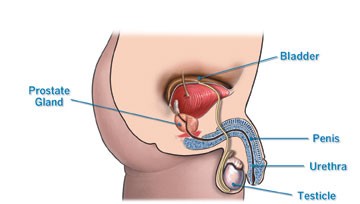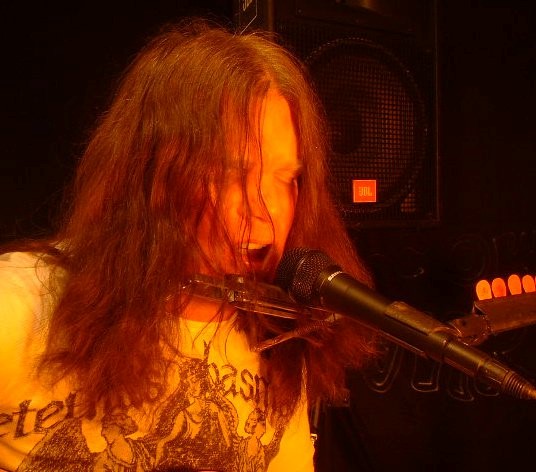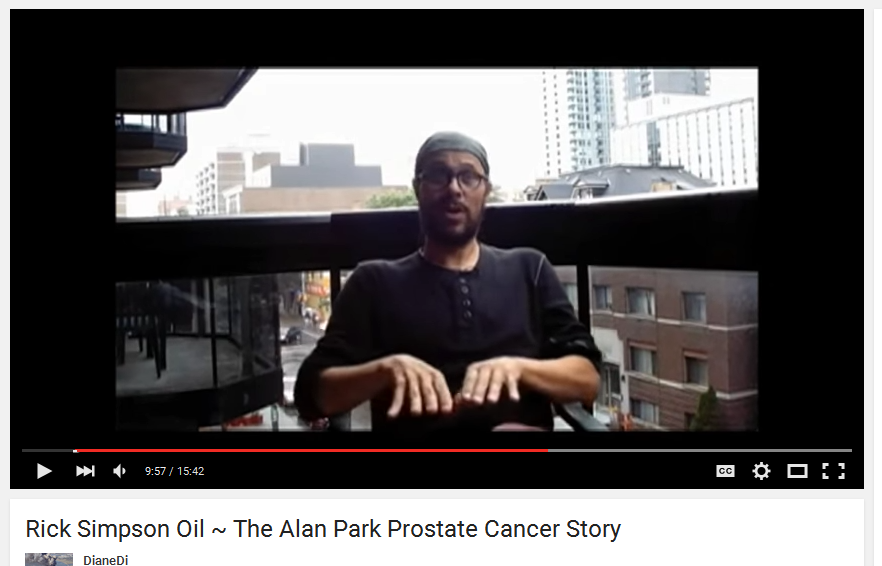Cannabis and Prostate Cancer: The Stories of Dusty Frank and Alan Park
Mr Frank’s story was originally published on Whaxy by Marie Veksler – Oct 20, 2014
There is growing enthusiasm for using cannabis oil in the treatment of prostate cancer. This is one of the most common cancers a man can get. It’s not particularly aggressive but the treatments can be extreme. As seen from the description below. You may recall that the celebrity Tommy Chong cured his prostate cancer using cannabis as part of his treatment.
From Mayo Clinic:
Prostate cancer is cancer that occurs in a man’s prostate — a small walnut-shaped gland that produces the seminal fluid that nourishes and transports sperm.
Prostate cancer is one of the most common types of cancer in men. Prostate cancer usually grows slowly and initially remains confined to the prostate gland, where it may not cause serious harm.
While some types of prostate cancer grow slowly and may need minimal or no treatment, other types are aggressive and can spread quickly.
Prostate cancer that is detected early — when it’s still confined to the prostate gland — has a better chance of successful treatment.
Symptoms
By Mayo Clinic Staff
Prostate cancer may cause no signs or symptoms in its early stages.
Prostate cancer that is more advanced may cause signs and symptoms such as:
• Trouble urinating
• Decreased force in the stream of urine
• Blood in the semen
• Discomfort in the pelvic area
• Bone pain
• Erectile dysfunction
Prostate screening tests might include:
• Digital rectal exam (DRE). During a DRE, your doctor inserts a gloved, lubricated finger into your rectum to examine your prostate, which is adjacent to the rectum. If your doctor finds any abnormalities in the texture, shape or size of your gland, you may need more tests.
• Prostate-specific antigen (PSA) test. A blood sample is drawn from a vein in your arm and analyzed for PSA, a substance that’s naturally produced by your prostate gland. It’s normal for a small amount of PSA to be in your bloodstream. However, if a higher than normal level is found, it may be an indication of prostate infection, inflammation, enlargement or cancer.
Diagnosing prostate cancer
If an abnormality is detected on a DRE or PSA test, your doctor may recommend tests to determine whether you have prostate cancer, such as:
• Ultrasound. If other tests raise concerns, your doctor may use transrectal ultrasound to further evaluate your prostate. A small probe, about the size and shape of a cigar, is inserted into your rectum. The probe uses sound waves to make a picture of your prostate gland.
• Collecting a sample of prostate tissue. If initial test results suggest prostate cancer, your doctor may recommend a procedure to collect a sample of cells from your prostate (prostate biopsy). Prostate biopsy is often done using a thin needle that’s inserted into the prostate to collect tissue. The tissue sample is analyzed in a lab to determine whether cancer cells are present.
Once testing is complete, your doctor assigns your cancer a stage. This helps determine your treatment options. The prostate cancer stages are:
• Stage I. This stage signifies very early cancer that’s confined to a small area of the prostate. When viewed under a microscope, the cancer cells aren’t considered aggressive.
• Stage II. Cancer at this stage may still be small but may be considered aggressive when cancer cells are viewed under the microscope. Or cancer that is stage II may be larger and may have grown to involve both sides of the prostate gland.
• Stage III. The cancer has spread beyond the prostate to the seminal vesicles or other nearby tissues.
• Stage IV. The cancer has grown to invade nearby organs, such as the bladder, or spread to lymph nodes, bones, lungs or other organs.
Listed below are the top 5 most commonly used treatment options for cancer, according to the National Cancer Institute.
• Surgery–to remove prostate. There are abdominal or perineal approaches.
• Radiation- External. Internal: Radiation placed inside your body (brachytherapy).
• Chemotherapy– Oral or Intravenous
• Hormone Therapy removes or blocks the hormone testosterone known to increase tumor growth.
• Freezing the prostate using needles inserted into the prostate.
• Targeted Therapy uses antibodies, drugs or other substances to target ONLY cancer cells without harming normal cells.
DUSTY FRANK
In October 2013, Dusty Frank, an award-winning singer and songwriter from Glenn Falls, NY was diagnosed with prostate cancer. His urologist told him that his treatment options were the usual: radiation or radical prostatectomy (total prostate removal). Frank preferred the use of cannabis oil over conventional treatments because often times the surgery leaves one impotent and or incontinent. Considerable blood loss is also an issue with this type of surgery.
Frank begin making his own cannabis oil in the same fashion as described on Run From The Cure video. He consumed 60 grams of cannabis oil within a 90-day period.
After only four days of the cannabis treatment, he noticed that pain from arthritis in his foot and shoulder were gone. He was able to use his hands more easily and tie his boots again. At the completion of his cannabis oil treatments his doctor ordered a follow up MRI. To his doctor’s amazement his MRI results were cancer-free.
Mr Frank was on several potent medications also for pain, anxiety and insomnia. Many of these have severe side effects and several are highly addicting. While on the cannabis oil he successfully weaned himself off of several drugs that caused a plethora of negative side effects. These include weaning himself off of OxyContin, Xanax, Ambien and several others. He even stopped taking his blood pressure medication since he was no longer hypertensive.
Said Frank:
“I haven’t had a pain pill in months. I no longer need any of these drugs.”
Doctors warned him that he did not have 3 months to explore alternative treatments. But explore them he did and much to his benefit.
ALAN PARK
Next we have comedian Alan Park who successfully used Rick Simpson oil as treatment for his prostate cancer, originally published on You Tube Oct. 17, 2014.
In an interview by Russel Barth, Mr Park tells us that in November of 2013 he was given the diagnosis of prostate cancer with a PSA of over 700! A normal PSA is under 4 just to give you an indication of how advanced his cancer was. He was subsequently referred to an oncologist. Alan informs us that upon diagnosis he immediately started himself on Rick Simpson Oil (RSO).
Starting out with tiny incremental doses and working his way up to the usual dose of what appears to have been one gram per day.
Alan had been having trouble sleeping previously because he would have to urinate every thirty minutes. After starting RSO he was able to finally get good quality sleep again often sleeping for up to five hours without the need to urinate. He would dose up and get quality sleep usually at around 10 PM all the way to 3 AM. In the afternoon he would again dose high and sleep for hours when he didn’t have to work. Every day taking RSO he felt better and better. He was feeling better because he was better and the PSA proves it.
MASSIVE DECREASE IN PSA
Are you sitting down? Here’s an amazing find. From the initial PSA of over 700, he reduced it to 375 in only two weeks. After one month of RSO his PSA dropped to 24 by January. His oncologist had recommended a drug which he claims would decrease his PSA to about 25 in one year, not one month. RSO did it in record time with no significant side effects. All the while Alan is feeling better and better. His appetite improved as well.
On one occasion Alan felt so good at his doctor’s office that his doctor said “You must be doing something.”
At that point he confessed that he had been using “pot oil” since his diagnosis. Predictably his oncologist looked at him and muttered something about how the RSO was only mimicking his natural hormonal system and that it’s not responsible for the crashing PSA values. So it was dismissed and never brought up again. Sound familiar?
But ignoring this marvelous oil’s actions didn’t last long. His next PSA from Feb came back 12. His March PSA was 4.5. April’s PSA came back a staggeringly low 1.76.
Let’s look at these numbers. Alan started out with an extremely high PSA of over 700. He immediately started RSO. In no more than five months, Alan’s PSA dropped to normal at 1.76. Based on those numbers we have a certified remission or cure. But was it really due to the RSO? The only way to know for sure would be to stop it and see if his PSA changes.
RE-CHALLENGE
Whenever one wishes to reveal a drug’s effect versus some other type of effect we do what’s called a re-challenge. Here Alan stopped his RSO in April for just one week. After seven days of no RSO, his PSA climbed back up rapidly to 4.5.
Upon re-challenge with the usual dose of RSO his follow up PSA plummeted to the lowest number ever—1.19!
This serves as indication that the RSO was indeed the drug responsible for dropping his PSA values.
Prostate cancer cancer seems to be particularly sensitive to the healing effects of RSO. In fact, it’s actions are so powerful that we should expect a pharmaceutical backlash since evidence suggests that it may outperform commercially used drugs.




But how can I get the oil in the UK